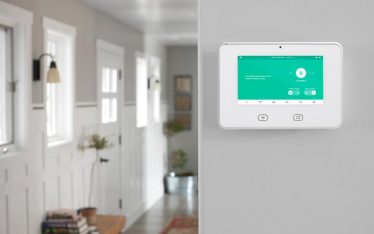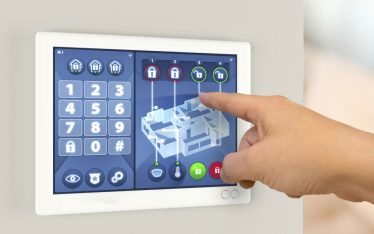Our homes are filling up with IoT devices, and many of them are vulnerable to digital threats. We all know there are cyber security risks on computers and smartphones; however, even smart fridges and baby monitors these days have internet connectivity that can be susceptible to attacks and breaches.
Keeping out these digital intruders is vital, but how do we handle these threats?
A Smart Home Installation with various countermeasures is how to keep unwanted cyber attackers at bay. SMARTHOMEWORKS is an experienced and professional Smart Home Company based in Sydney to handle your threats with their comprehensive Smart Home Installation Services.
But first, what are IoT devices?
IoT stands for the ‘Internet of Things. It essentially describes all physical devices with sensors, software, connectivity, and processing capacity. Therefore, an IoT device can connect to a network and exchange data with other devices and systems using the internet or other coms networks.
Some examples of IoT devices in our home:
- Smart appliances
- Smart TVs
- Doorbell cams
- Temperature controls
- Air quality monitors
- Automated lighting systems
Common cyber security threats against IoT devices
Understandably, many of us are unfamiliar with common cyber security threats against IoT devices, and you may be surprised by the number of different online hazards. Here we have five security threats that a Smart Home Installation needs to be protected from.
Man-in-the-middle
Man-in-the-middle is when an attacker breaches and interrupts communication between two systems with a receiver/transmitter configuration.
Man-in-the-middle example:
Attackers interfere with HVAC systems during extreme weather, causing problematic scenarios for users and providers.
Smart Home Installation Countermeasure:
- Authentication
- Encryption
- Security Lifecycle Management
Data and identity theft
Many unprotected smart appliances generate data and hold personal identity information; therefore, they are often vulnerable to data and identity theft, leading to fraudulent transactions.
Data and identity theft example:
A smart fridge hacked for the owner’s registration details that are needed for warranty and login procedures.
Smart Home Installation Countermeasure:
- Authentication
- Encryption
- Access Control
Device hijacking
A cyber attacker hijacks a device to take control of its function, and often, the offender does not make extreme changes, meaning it is hard to detect. Once hijacked, they can access entire home networks.
Device hijacking example:
A thermostat can be hijacked, which is a gateway to home networks and gives hijackers the power to change security settings and access.
Smart Home Installation Countermeasure:
- Device Identification
- Access Control
- Security Lifecycle Management
Distributed Denial of Service (DDoS)
A Distributed Denial of Service attack causes a smart appliance, device or network to become temporarily unavailable to the user by disrupting the service of the host that is connected. A DDoS attack comes from numerous sources, making it difficult to block the threat once engaged.
Distributed Denial of Service example:
A Mirai botnet DDoS attack caused a mass interruption and problems in the USA.
Smart Home Installation Countermeasure:
- Device Identification
- Access Control
- Security Monitoring and Analysis
Permanent Denial of Service (PDoS)
A Permanent Denial of Service attack is similar to DDoS; however, it damages devices to the point where hardware reinstallation or device replacement is required.
Permanent Denial of Service example:
Bots manipulate IoT device passwords to deny service permanently.
Smart Home Installation Countermeasure:
- Authentication
- Encryption
- Application Level DDoS Protection
- Access Control
- Security Monitoring and Analysis
Countermeasures to secure your Smart Home Installation
Many safety countermeasures can protect IoT devices and secure your Smart Home Installation without disrupting your internet service. Here are some countermeasures that SMARTHOMEWORKS use to secure your Smart Home Installation.
Secure boot technology
Secure boot technology stops hackers from installing malicious firmware and does so by using cryptographic codes. This ensures that connected devices use codes generated by the device’s OEM or another authorised and trusted third party, preventing harmful attacks.
Two-way authentication
A Smart Home Installation needs to connect to home networks to operate correctly, and prior to doing so, should be authenticated before transmitting and receiving valuable data. Two-way authentication ensures that all data originates from secure and known devices, not corrupt and malicious sources. Two-way authentication uses cryptographic algorithms with symmetric and asymmetric keys to guarantee the best security possible to avoid fraudulent activity.
Encryption secure communication
Encryption provides secure communication by only allowing those with secure description keys access to received and transmitted data between a Smart Home Installation and the network service.
Security monitoring and analysis
The security monitoring and analysis process take critical data such as end-point device data and network connectivity traffic and checks to detect security threats and system violations. If any suspected threats or violations are found, the most appropriate countermeasure actions will be performed, including quarantining the device until it is cleared of threat.
The monitor, analyse and act process happens in real-time to ensure smart appliances and devices are secure from manipulation, which may lead to inaccurate monitoring and analyses.
Security lifecycle management
Security lifecycle management essentially allows network service providers and OEMs to control and manage the security of IOT devices when connected and operating. If a cyber-attack occurs, Rapid Over The Air (ROTA) device keys is used to guarantee the minimum disruption to service.
Another feature of security lifecycle management ensures that smart devices no longer used are decommissioned to avoid being exploited and becoming a security threat to services.
Related Posts:
- Which Is the Best Wireless Home Theatre System in 2022
- How to Build a Smart Home Theatre?
- Can I Build a Home Theatre in an Apartment?
SMARTHOMEWORKS competent and professional Smart Home Installation Services
SMARTHOMEWORKS are competent to implement the best countermeasures to protect your Smart Home Installation from security threats. With hardware protection solutions and software security functions, SMARTHOMEWORKS professional Smart Home Installation Services make them Sydney’s best Smart Home Company.
From security monitoring and analysis to handling and storage of confidential keys, SMARTHOMEWORKS offer competent and professional Smart Home Installation Services. Contact us today to secure your Smart Home Installation from threats with the industry best countermeasures.






